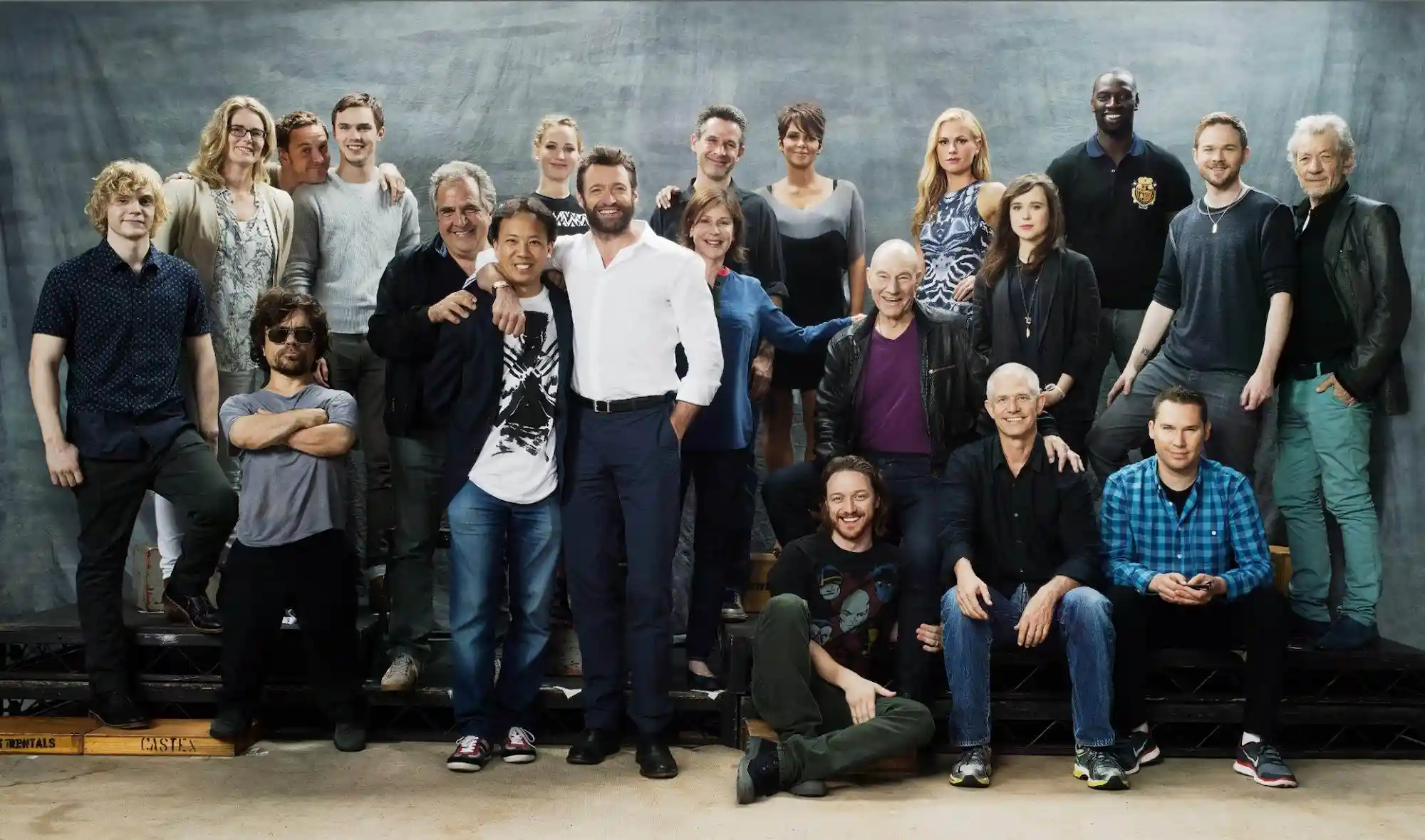You might’ve read and heard a lot about brain hacking. However, not many people can embody the science behind them quite like Jim Kwik.
Powered by his lifelong aim to unlock human potential, this speed-learning and brain coach has worked with clients from various walks of life. Hollywood A-listers? Check. World-class entrepreneurs and Fortune 500 billionaires? You’ve got it.
And he does it all while sharing these super learning techniques with everyday people, too, through resources like his Superbrain Quest on Mindvalley.
This is the story of the mind behind the methods that are redefining success in learning.
Who is Jim Kwik?
World-renowned brain coach is one thing, but Jim is also a best-selling author, podcaster, and founder of Kwik Learning, an accelerated learning platform in 150 countries. He has made it his life’s work to transform the way people learn, grow, and reach new levels of mental agility.
His desire to help others unlock their full potential boils down to the fact that he knows firsthand what it’s like to struggle with learning. “Shame on me if I could help somebody who’s struggling and suffering the way that I did, and I didn’t do everything I could to reach them,” he says.
To him, everyone has the potential to be extraordinary. This belief is rooted in his own journey from a struggling student to a mind-power icon.
From “broken brain” to super brain
Jim’s path to where he is now was anything but easy.
After experiencing a brain injury at five years old, he struggled with reading, memory, and learning. This continued, and at the age of nine, a teacher identified him as “the boy with the broken brain” —a label he reluctantly accepted for years.
As Jim often recounts, it wasn’t until a pivotal moment in college that his journey truly began. “My inspiration was my desperation,” he explains. “I was lucky enough to get into college at the age of 18. I thought freshmen could have a fresh start. I thought, maybe I could get better grades in college.”
But instead of doing better, Jim did worse. He lagged in college, with piles of unread books on his desk. The thought “I can’t keep up” constantly ran through his mind as he lost both his appetite and sleep along the way.
Still, he kept pushing himself past the brink. He often immersed himself in subjects like history, Spanish, English, math, and science, all while ignoring the nagging sense that schools teach what to learn without ever showing you how to learn.
Then, fate intervened.
One night, after studying intensely without much rest, he passed out and fell down a flight of stairs. He woke up two days later in a hospital ward with a second head injury. “I’d hit my head really bad. Again. I thought I had died,” he recounts.
But epiphany came—in the form of a nurse serving him some tea. The mug had a picture of Albert Einstein on it, with the quote, “The same level of thinking that created your problem won’t solve your problem.”
Reading it, the fog that long clouded Jim’s mind dissipated for the first time.
A Kwik turning point
Jim’s eureka moment in the hospital led him to admit his real problem: “a very slow brain.” From there, it became apparent that he needed “a better brain… a super brain.”
Faced with the stark realization that traditional learning methods weren’t working for him, Jim immersed himself in brain science, cognitive psychology, and memory training techniques—fields off the beaten path in higher education, if you will. It‘s during this phase of unlearning and relearning that a light went off in his mind.
“I just started to understand things for the first time. I started to absorb information,” he recounts. “It’s like I had just activated my super brain. But why did I have to suffer all of these years? Why don’t they teach us this in school?”
And so, through self-studying and practical applications over the years, Jim transformed his so-called “broken brain” into what he now calls a “super brain.” And along the way, he took notes that would later serve as the foundation for helping others just like him.
It’s clear that Jim’s journey from struggle to mastery is more than a personal triumph. His zero-to-hero story is ultimately instrumental to anyone willing to learn how to learn faster, read faster, attain mental clarity, and more.
On training superheroes and transcending limits
I believe that the journey we’re on here [on Earth] is about transcending what we think is possible. It’s about showing up as our best selves, whatever the circumstances.
— Jim Kwik, brain coach and trainer of Mindvalley’s Superbrain Quest
Ever wonder how some of the world’s most iconic characters get into superhero mode? Two words: Jim’s guidance.
His work with the cast of the X-Men films, for one, didn’t involve memory tricks or focus exercises. No, it was about stepping into a mindset fit for superheroes.

And this mindset, as Jim sees it, isn’t just for Hollywood—it’s for anyone ready to break through personal limits. So it doesn’t matter if you’re a high-level public figure or an everyday Joe navigating the ways of the world. Adopting this outlook in life can help you shatter personal limits, no matter who you are.
I believe that the journey we’re on here [on Earth] is about transcending what we think is possible,” he says. “It’s about showing up as our best selves, whatever the circumstances.”
And breaking past personal limits, Jim argues, begins with mastering your mental state. “All learning is state-dependent,” he says.
After all, our emotional state has been shown to directly impact how we learn and retain information. It’s no wonder he’s always “Kwik” to encourage a playful, curious approach to learning—qualities he says help access a more “open” state of mind, much like a child.
Why does this playful approach matter? Well, it tends to bring out your inner explorer. In Jim’s world, brain training embodying this ethos is rooted in techniques like visualization, physical exercises, and mental conditioning to activate the brain’s learning centers.
Just ask Will Smith, who used some of Jim’s fun exercises to sharpen his focus and bring an even deeper level of dedication to his roles:
By using play to access these “genius states,” as Jim calls them, anyone and everyone can remember, learn, and perform in ways they never thought possible.
Learn with Jim Kwik, superbrain style
Maybe you’ve already come across some of the best Jim Kwik’s quotes that inspire you to push your limits. But it doesn’t have to stop there.
Thankfully, there are many other materials from him to equip you on your path to accelerated learning… Like Jim’s book, online courses, and popular podcast—they’re all part of a practical toolkit to empower you to “learn anything faster”…because you can.
Explore them below.
Jim Kwik’s book
In his New York Times best-selling book, Limitless: Upgrade Your Brain, Learn Anything Faster, and Unlock Your Exceptional Life, Jim unpacks years of personal insights and cutting-edge science to help readers break past their mental barriers.
The book is more than just a guide to learning faster; it’s a call to action for anyone feeling held back by traditional methods. Through practical exercises, you’re encouraged to rethink what’s possible by building confidence, self-talk, and mental flexibility.
Jim Kwik’s courses
1. Superbrain
The Superbrain Quest—which is one of Mindvalley’s most popular programs—offers a 30-day dive into accelerated learning. Over these daily sessions, you’ll learn powerful techniques for everything from mental exercises to brain-boosting nutrition—tools designed to help you sharpen focus, boost memory, and enhance overall cognitive agility.
This Quest is perfect for you if you want to tap into all of Kwik’s core teachings in a quick yet impactful microlearning format—all in a single place.
Take a peek at what Jim has to offer in this program:
2. Super Reading
Speed and comprehension meet in the Super Reading Quest, so you can double your reading momentum and accelerate your learning chops like never before. In just 21 days, this program breaks down the reading habits we all picked up as kids (like that inner voice reading out loud in your head) that can hold us back from absorbing and retaining information.
Thanks to this Quest, you may finally get through that stack of books collecting dust on your shelf—or avoid dozing off mid-chapter.
3. Other courses
If you want to explore even more of Jim’s strategies for learning and living smarter, you can head to his official website. There, he hosts a suite of standalone courses, each shining the light on specific areas, including:
- Kwik Thinking. A 21-day guide to cracking creative blocks and learning how to problem-solve faster, no matter the challenge.
- Kwik Productivity. This 10-day program takes you through Jim’s Limitless Model in quick, bite-sized lessons that make time management feel like second nature.
- Kwik Confidence. Seven days of accelerated learning techniques to dial up your confidence and open up new possibilities.
- Kwik Success. A high-level coaching program for bold achievers, offering ongoing support and insights to keep you on track toward your biggest goals.
The Kwik Brain Podcast
If you’re into brain hacks and looking to level up your mental game, The Kwik Brain Podcast is packed with insights for audio-first learners on the go.
With over 60 million downloads and thousands of reviews, this podcast has this learning coach breaking down everything under his belt, from the signature Jim Kwik speed reading tips to undeniably effective memory tricks.
By listening in, you can expect to enjoy quick, digestible episodes that are easy to apply and impossible to ignore—knowledge delivered in true superbrain fashion, indeed.
How Jim Kwik changed the lives of his students
Jim’s teachings have touched people from all walks of life, transforming their mental skills and boosting their confidence. Through the Superbrain Quest, his students don’t just improve their memory; they also gain tools to reshape their lives.
For Milica Lazovic, an opera singer from Italy, Superbrain added much-needed structure to her mornings. “Before, I struggled to remember things like PIN numbers and dates,” she says. “Now, my mornings start with reading, meditation, and brain-boosting foods. I even began journaling, which brings so much peace.”
Meanwhile, Sooni Mohammed, a high schooler in Toronto, Canada, found his confidence soaring along with his grades after taking the Quest. “I felt I could remember anything,” he shares. “Even my conversations improved as I could recall details more easily.”
Then there’s Michael Ruta, a marketing director in the U.S., who redefined his approach to memory with Jim’s teachings. “I used to believe a bad memory ‘ran in my family,” he reflects. “Now, people turn to me for names and dates.”
As for Portugal-based civil engineer Ivan Garcia, Superbrain brought clarity into his day-to-day life. “Before this Quest, I relied on notes for everything,” he says. “Now, my memory has improved significantly, and I feel mentally sharper.”
Likewise, Ali Tarik Özer, a freelance artist from Turkey, experienced more life balance after taking the Quest. “I always wanted to improve but lacked discipline,” he confides. “Superbrain helped me build small habits with big impacts—I feel more alive than I have in years.”
Each real-life testimonial is proof that Jim’s Superbrain Quest is more than a memory program. It’s a transformative experience that connects students worldwide to their own mental potential—no matter who they are or what they do.
Awaken your unstoppable
There’s a way to wake up each day with a mind that’s sharper, more resilient, and ready to take on any challenge. No more confusion. No more feeling held back.
And that’s with Jim Kwik’s Becoming a Super Learning Masterclass on Mindvalley. By signing up for this session, you will learn to:
- Debunk the myth we’re told about how our brain works,
- Uncover the perfect morning routine for optimal brain power,
- Master the five-minute brain exercise that spurs mental growth,
- Clear up any mental fog with the right brain foods, and
- Much more.
Your time to step into your greatness is now. Seize your spot among the millions who have discovered the power of their super brains, unleashed through proper, optimal guidance.
As Jim would always remind us, “Your life today is the result of your thinking yesterday. Your life tomorrow will be determined by what you think and do today.”
Welcome in.









